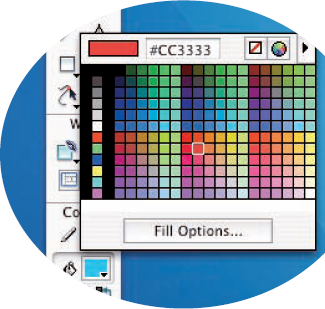Chapter 9. Color on the Web
In This Chapter
Understanding the RGB color system
Working with 24-bit and 8-bit color palettes
Demystifying hexadecimal color
Getting the best quality at the lowest file size
The way that color works on the computer is one of those great mysteries that everyone appreciates but has no idea how it works — including most Web designers. Most people figure that it's just too complex to understand. And designers don't care about the inner workings — they just want their stuff to look good. But in the print world, designers must know how the color printing process works in order to get the most out of their designs. The same rule holds true in Web design — you simply can't get around the technical stuff. You have to know how color works on the Web in order to design effective Web pages.

Never fear, the technical mysteries aren't what they're cracked up to be. Whereas the printing process uses four colors (cyan, magenta, yellow, and black, or the CMYK system) to mix a wide range of colors, the computer uses only three colors (red, green, and blue) to generate its colors. What's amazing is that even though the computer uses one less color than its print counterpart in its mixing scheme, those three colors are capable of producing a mind-blowing range of hues — way beyond the possibilities of the CMYK system. There's a catch, of course: Older systems can display only ...
Get Web Design For Dummies®, 2nd Edition now with the O’Reilly learning platform.
O’Reilly members experience books, live events, courses curated by job role, and more from O’Reilly and nearly 200 top publishers.

